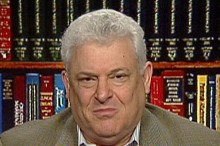




First US face transplant patient leaves hospital
By MARILYNN MARCHIONE, AP Medical Writer Marilynn Marchione, Ap Medical Writer Fri Feb 6, 5:23 pm ET
She can eat pizza. And hamburgers. She can smell perfume, drink coffee from a cup, and purse her lips as if to blow a kiss. Except that one lip is hers, and the other is from a dead woman. She is the nation's first face transplant patient, and on Thursday night, she went home from a Cleveland hospital. "I'm happy about myself," she told her doctors.
"She accepted her new face," said Dr. Maria Siemionow, the Cleveland Clinic reconstructive surgeon who led the historic operation in early December.
The woman's identity has not been revealed, and hospital officials won't say where she went. She and her family have declined requests for an interview.
She suffered a traumatic injury several years ago, the details of which doctors also won't reveal. But it left the woman with no nose, palate, or way to eat or breathe normally. In a 22-hour procedure, 80 percent of her face was replaced with bone, muscles, nerves, skin and *lo** vessels from another woman who had just died.
It was the fourth partial face transplant in the world, though the others were not as extensive.
The patient's recovery has been astonishing, Siemionow said. She shows no signs of rejecting her new face, is doing well on standard immune-suppressing drugs, and can breathe normally instead of through a hole in her windpipe.
A couple weeks ago, she ate pizza for the first time in years.
"She can actually feel the new face, and she does not feel the difference between her old face and her new face," Siemionow said.
"Before surgery, she couldn't smell at all," the surgeon said. Now, "she can recognize perfumes, she can eat and smell her hamburger ... she can drink her coffee from the cup."
Most surprising to doctors, who thought a transplanted face would never be able to do this: "She can wink her eye," Siemionow said.
Her face appears so normal, that she could probably even could go out in public and not be recognized as someone who had a face transplant, Siemionow said.
"The scars are nicely hidden because it's such a large transplant," she said. "We are really pleased with the outcome."
The woman must return a couple of times a week for follow-up care. She still needs restorative dental work. Doctors are working on a dental prosthesis to help fill the massive defect she suffered from her injury and to hold upper false teeth. Her lower teeth and lip are her own.
Already, the improvement in her quality of life is dramatic, and she is enjoying small pleasures "that we take for granted," Siemionow said.
"She enjoys cookies with her coffee," but could not drink from a cup before the transplant. "She loves hamburgers. For years, she could not eat chicken," and longed for its taste, the surgeon said.
The woman suffered emotionally from being called names and frightening children who ran away when they saw her, Siemionow said in a December news conference when the transplant was announced. Now, she has found inner happiness and confidence with the new face.
"It's something that will give a lot of hope to other patients," Siemionow said.
Such operations have been controversial because unlike transplants of vital organs like hearts and livers, face transplants are done to improve quality of life not extend it. Recipients run the risk of deadly complications and must take immune-suppressing drugs for the rest of their lives to prevent organ rejection, raising their odds of cancer and infections.
However, leading physician groups and bioethicists praised the Cleveland case and have warmed to the idea for carefully selected patients who have exhausted other reconstructive surgery options.
The Cleveland Clinic has received a military grant to investigate face transplants for injured soldiers, and Siemionow visited Brooke Army Medical Center in San Antonio a few months ago to consider potential candidates.
The clinic hopes to offer more such operations, but "we'll give our results a little time" and make sure this patient does well, she said.
The world's first partial face transplant was performed in France in 2005 on a 38-year-old woman who had been mauled by her dog. Isabelle Dinoire received a new nose, chin and lips from a brain-dead donor. Apart from some rejection episodes, she has done well.
Two others have received partial face transplants since then a Chinese farmer attacked by a bear and a European man disfigured by a genetic condition.
___
.
 Veteran dancehall kingpin Shabba Ranks is all set to deliver what is expected to be a high-energy performance on February 15. The event is dubbed Flashback Night and it will be held at Café Iguana Pines which is located in Pembroke Pines, Hollywood, Florida.
Veteran dancehall kingpin Shabba Ranks is all set to deliver what is expected to be a high-energy performance on February 15. The event is dubbed Flashback Night and it will be held at Café Iguana Pines which is located in Pembroke Pines, Hollywood, Florida.
 Gospel artiste Calvin Whilby aka Prodigal Son started singing in 1997 and has performed in the Caribbean, Europe, Canada and the USA. The self made song writer and producer enjoys doing his own thing but has on occasion worked with other producers such as: Danny Brownie and Rayon Smith.
Gospel artiste Calvin Whilby aka Prodigal Son started singing in 1997 and has performed in the Caribbean, Europe, Canada and the USA. The self made song writer and producer enjoys doing his own thing but has on occasion worked with other producers such as: Danny Brownie and Rayon Smith.














 I absolutely love the rumor mill because theres always something juicy coming out of it. Its latest offering: the First Lady Michelle Obama has issues with Beyonce trying to get too close to her man. (Now that's pretty funny.)
I absolutely love the rumor mill because theres always something juicy coming out of it. Its latest offering: the First Lady Michelle Obama has issues with Beyonce trying to get too close to her man. (Now that's pretty funny.) Late last night up until this morning, OutAroad.com has received a tremendous amount of phone calls and emails asking if its true that Beenie Man got shot. However, after doing our own investigation OutAroad.com gets to understand that a warrant was issued for arrest of Moses.
Late last night up until this morning, OutAroad.com has received a tremendous amount of phone calls and emails asking if its true that Beenie Man got shot. However, after doing our own investigation OutAroad.com gets to understand that a warrant was issued for arrest of Moses.
 'It's among the realm of possibilities,' Tip tells MTV News.
'It's among the realm of possibilities,' Tip tells MTV News.
 YardFlex caught up with Milk yesterday morning as she explains her feelings about the video that has been in circulation. I am sure some, if not everyone has heard or seen the video of Milk and her boyfriend. Milk has stated that she is deeply hurt by the fact that people are so evil. "Dj Liquid and I have been together for six years and the video only got out because he lost his phone," Milk explained
YardFlex caught up with Milk yesterday morning as she explains her feelings about the video that has been in circulation. I am sure some, if not everyone has heard or seen the video of Milk and her boyfriend. Milk has stated that she is deeply hurt by the fact that people are so evil. "Dj Liquid and I have been together for six years and the video only got out because he lost his phone," Milk explained













